You have found yourself with some sort of rash or blister after being out in the sun (oh no!). Is this a sun allergy? Are sun allergies real? Prepare to find the answers to all your questions inside this sun allergy guide.

As an Amazon Associate, I earn from qualifying purchases
Table of Contents
Are sun allergies real?
Yes, sun allergies are real, and they affect all ages (children and adults alike). The term “sun allergy” (photosensitivity) is a blanket term used when there is an irrational immune response to sun exposure. These immune system responses include polymorphous light eruption (PMLE), solar urticaria, Actinic prurigo, and chemical photosensitization (Photoallergic or phototoxic reaction).
Non-Sun Allergy Conditions
Other sun-related conditions that ARE NOT considered sun allergies include heat cramps, heat exhaustion, and heatstroke. These conditions are not caused by an immune system reaction and are considered a medical emergency.
Besides heat-related conditions, the summer months can bring environmental allergies. Summer allergies are a thing, and give you symptoms like itchy, watery, eyes, coughing, and sneezing.
What is the scientific name for a sun allergy?
The scientific name for a sun allergy is “Photosensitivity”. Harvard Health defines sun allergy as, “(A sun allergy) an immune system reaction to sunlight, most often, an itchy red rash.”
How common are sun allergies?
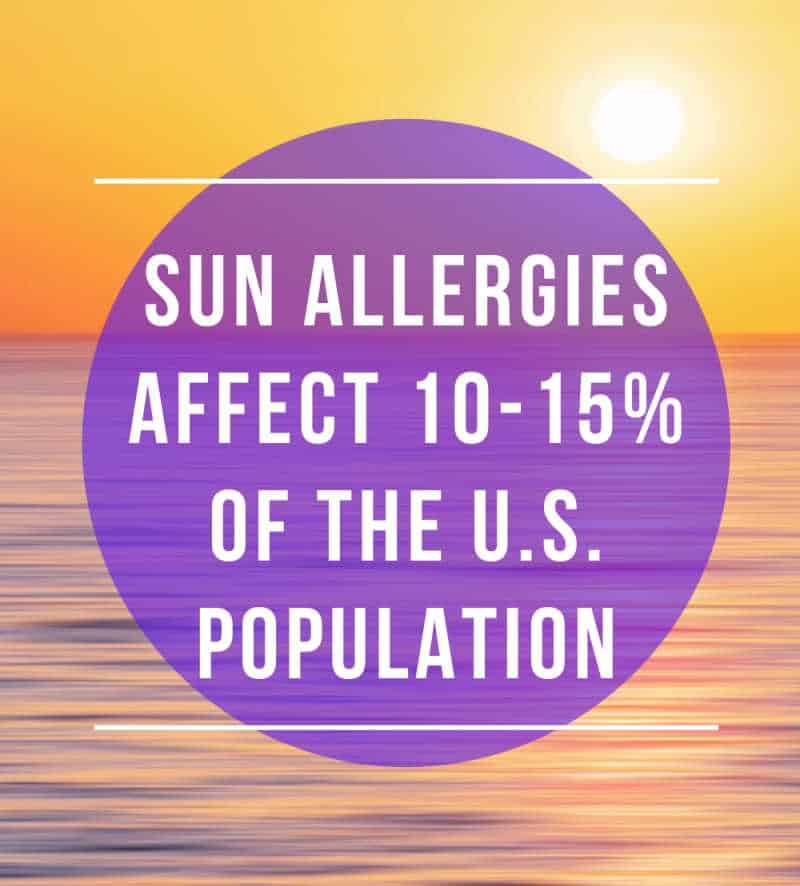
The most common type of sun allergy is polymorphous light eruption (PMLE) which affects 10 – 15% of the U.S. population. There are many other diseases that can be linked to sun allergies besides PMLE, but they are not as prevalent.
What do sun allergies look like?

Sun allergies can look different for everyone, but you may see redness, a rash, small bumps, or blisters develop on the skin. The affected skin may also feel hot or tender to the touch.
Causes of Sun Allergies
Possible reasons you may be experiencing sun allergies are a family history of sun allergies, certain diseases, or medications that cause increased sensitivity to sunlight.
Sometimes the cause of sun allergies is “idiopathic” which is a fancy way of saying it is unknown.
Common medications that cause sun allergies
This list is from the FDA but is not all-inclusive, as there are over 100 medications that can cause photosensitivity. Also, note that not everyone will experience sun allergy-like symptoms when taking these medications, it is just a possible side effect known as chemical photosensitization or “sun sensitive”.
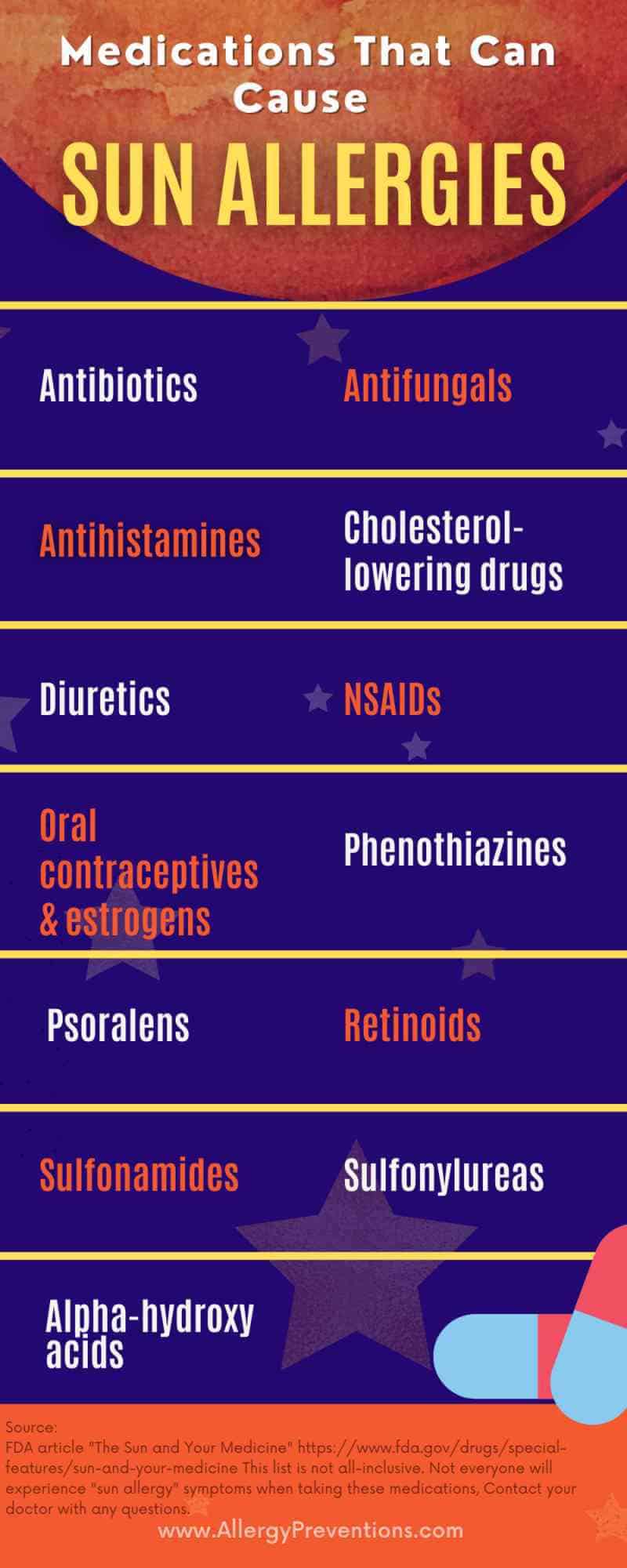
- Alpha-hydroxy acids in cosmetics
- Antibiotics (ciprofloxacin, doxycycline, levofloxacin, ofloxacin, tetracycline, trimethoprim)
- Antifungals (flucytosine, griseofulvin, voriconazole)
- Antihistamines (cetirizine, diphenhydramine, loratadine, promethazine, cyproheptadine)
- Cholesterol-lowering drugs (simvastatin, atorvastatin, lovastatin, pravastatin)
- Diuretics (thiazide diuretics: hydrochlorothiazide, chlorthalidone, chlorothiazide.; other diuretics: furosemide and triamterene)
- Non-steroidal anti-inflammatory drugs (ibuprofen, naproxen, celecoxib, piroxicam, ketoprofen)
- Oral contraceptives and estrogens
- Phenothiazines (tranquilizers, anti-emetics: examples, chlorpromazine, fluphenazine, promethazine, thioridazine, prochlorperazine)
- Psoralens (methoxsalen, trioxsalen)
- Retinoids (acitretin, isotretinoin)
- Sulfonamides (acetazolamide, sulfadiazine, sulfamethizole, sulfamethoxazole, sulfapyridine, sulfasalazine, sulfisoxazole)
- Sulfonylureas for type 2 diabetes (glipizide, glyburide)
I can speak to certain medications giving you sun allergy symptoms. I remember taking a round of antibiotics and I felt the sun more intensely on my skin, I also burned easily and got tiny bumps on my forehead. After I completed the antibiotics my symptoms disappeared and I was back to normal.
Diseases Related to Abnormal Photosensitivity Responses of the Skin
According to The Skin Cancer Foundation, there are 19 documented diseases related to abnormal photosensitivity response, more commonly known as sun allergies.
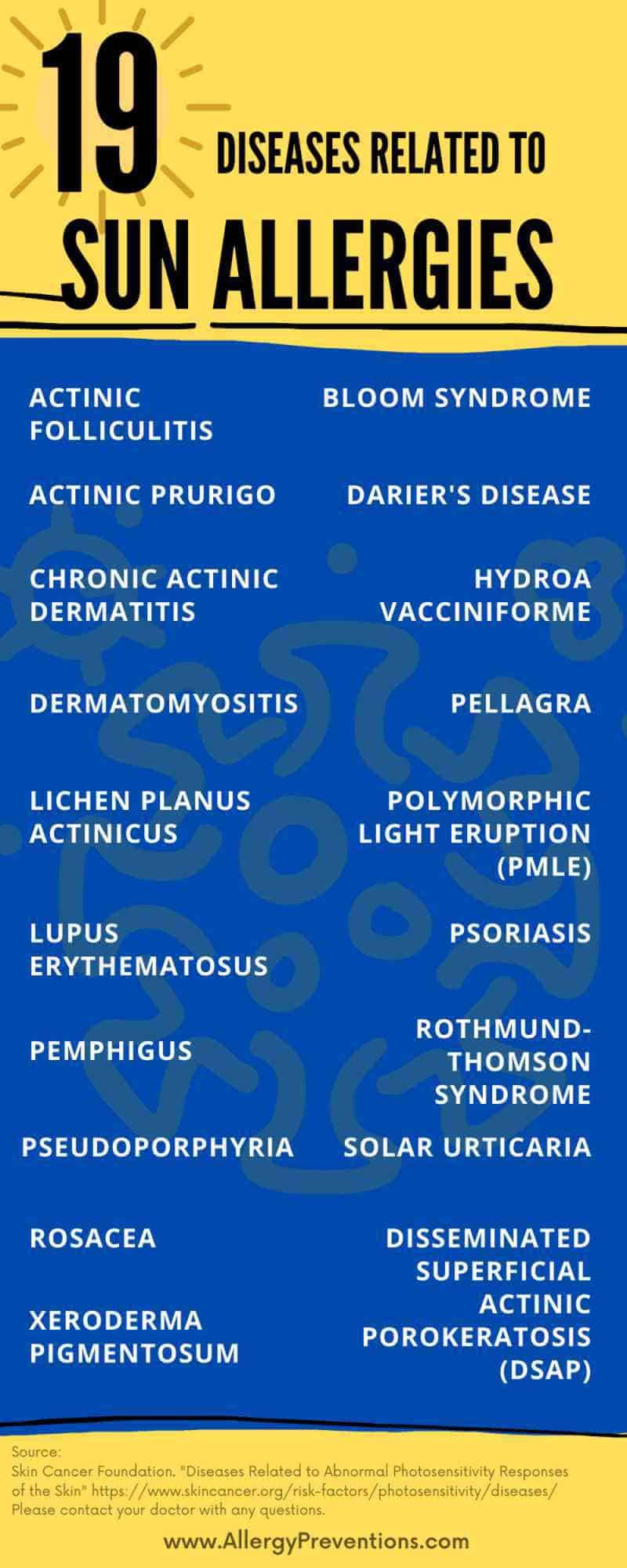
- Actinic folliculitis
- Actinic Prurigo
- Bloom Syndrome
- Chronic Actinic Dermatitis
- Darier’s Disease
- Dermatomyositis
- Disseminated Superficial Actinic Porokeratosis (DSAP)
- Hydroa Vacciniforme
- Lichen Planus Actinicus
- Lupus Erythematosus
- Pellagra
- Pemphigus
- Polymorphic Light Eruption (PMLE)
- Pseudoporphyria
- Psoriasis
- Rosacea
- Rothmund-Thomson Syndrome
- Solar Urticaria
- Xeroderma Pigmentosum
Can you develop sun allergies?
You can develop sun allergies, which usually manifests as polymorphous light eruption (PMLE), the most common type of sun allergy. Regardless of age, you can develop sun allergies.
Fact: Females are more likely to develop PMLE.
However, if you are taking a medication that increases photosensitivity (chemical photosensitization) you could be a risk for developing “sun allergies”, but the symptoms usually only last until to stop taking the medication.
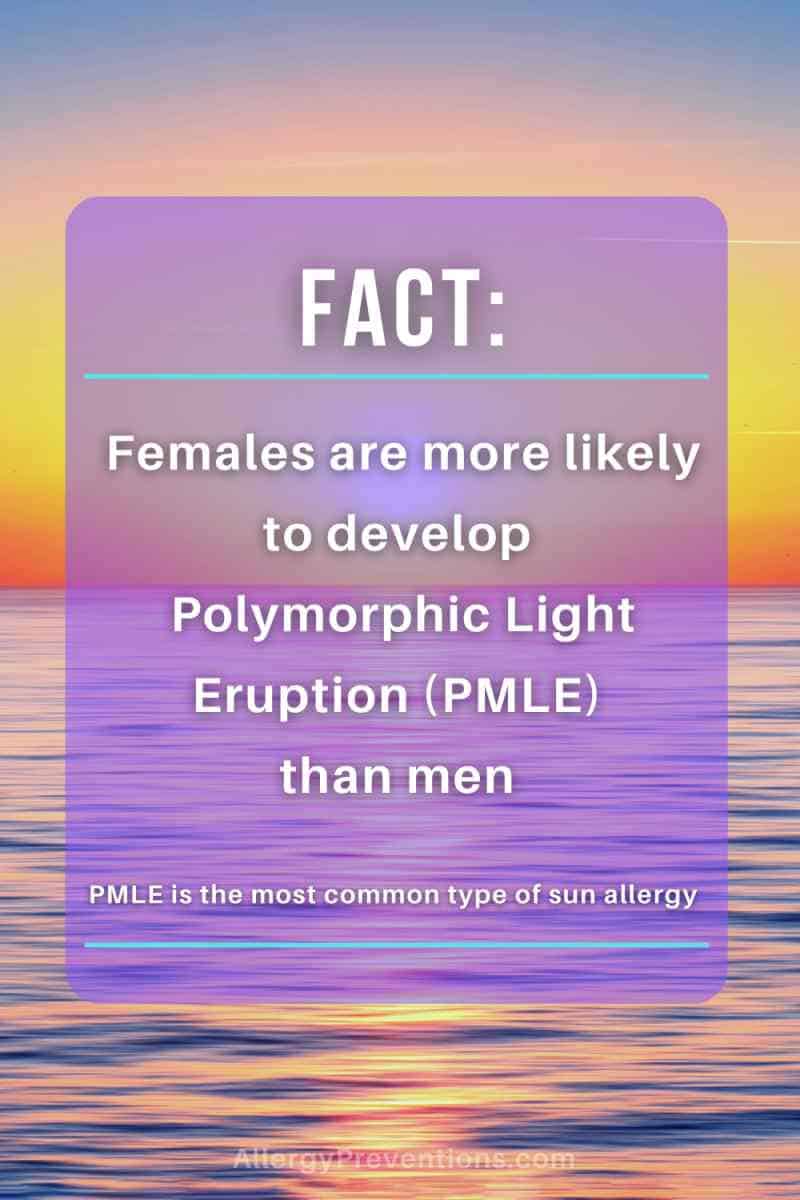
Sun Allergy Symptoms
Symptoms of sun allergies vary from person to person, but there are common sun allergy symptoms you can look for in children and adults:
- Blisters
- Bumps
- Dry red patches
- Hives
- Inflamed or itchy skin
- Rash
Sun Sensitivity Symptoms
Sun sensitivity refers to the skin’s heightened reaction to exposure to sunlight or ultraviolet (UV) rays. Here is a list of some typical sun sensitivity symptoms:
- Sunburn: Redness, pain, and blistering on the skin that’s been exposed to the sun.
- Itching: Itchy, irritated skin that may be red and bumpy.
- Rash: Small red bumps or blisters on the skin that may be itchy or painful.
- Hives: Red, raised, and itchy bumps on the skin.
- Swelling: Swelling of the skin or areas of the body that have been exposed to the sun.
- Headache: A headache that may be accompanied by nausea and dizziness.
- Fatigue: Feeling tired or weak after being in the sun.
- Nausea: Feeling sick to your stomach after being in the sun.
- Dizziness: Feeling lightheaded or dizzy after being in the sun.
- Fever: A mild fever that may occur after sun exposure.
Duration of symptoms
The duration of sun allergy symptoms varies according to your reaction and severity. Typically the symptoms can last for up to two weeks after sun exposure.
Where do sun allergies show up on the body?

Sun allergies can show up anywhere on the body but are most commonly found where you are exposed to the sun:
- Arms
- Back
- Chest
- Forehead
- Legs
- Neck
- Shoulders
Could my sun allergy be contact dermatitis from my sunscreen?

Yes, your contact dermatitis can be caused by the sunscreen you are using. A sunscreen allergy is also known as allergic contact dermatitis. Usually, a rash will develop when you placed sunscreen on the skin.
Less commonly, the rash has been known to spread to other areas of the body where sunscreen was not applied, but it is still possible.
Why am I allergic to my sunscreen?
Sunscreens have lots of ingredients, most of which are used to protect our skin from the harmful rays of the sun. Other ingredients are included to help keep the sunscreen on the skin or are added as a fragrance.
Consequently, it may be hard to narrow down what exactly you are allergic to due to these extensive ingredient lists.
What You Can Do About A Sunscreen Allergy or Sensitivity
Finding an effective sunscreen with minimal ingredients might be your best bet to prevent any future sunscreen rashes. Of course, discuss these options with your doctor to ensure you truly have an allergy to your sunscreen.

I am always looking for a sunscreen that is safe for the whole family and does not contain toxic chemicals. These two sunscreens are what we purchased to keep us safe from the sun and unnecessary chemical exposures.
The BADGER® Baby Mineral Sunscreen Cream as well as the Babo Botanicals® Clear Zin Sunscreen offer you a healthier, hypoallergenic, option if you are going low-tox or have a reaction to your current sunscreen.
How to Prevent & Treat Sun Allergies
There are multiple ways to try and avoid or prevent sun allergies. However, there is no cure for polymorphous light eruption (PMLE), which is the most common sun allergy. The NHS (National Health Service, UK) gives us some pointers to prevent, treat and avoid sun allergies.

Avoidance
Avoid being out in the sun between 11 a.m. and 3 p.m. as this is when the sun is beaming down on us the hardest. In addition, this is a good practice regardless of a sun allergy as it limits harmful ultraviolet exposure.
Wear Sunscreen

Whenever in the sun, utilize a high-quality sunscreen that is at least 30 SPF (sun protection factor) and blocks both UVA and UVB rays. These rays are linked to skin cancer and premature aging.
Steroid Creams and Ointments
Steroid creams are often prescribed by doctors to help with the symptoms of sun allergies. These creams contain corticosteroids, which are a type of anti-inflammatory medication that can reduce redness, swelling, and itching on the affected skin.
When applied topically to the affected area, steroid creams can help to reduce inflammation and irritation caused by sun allergies. They work by decreasing the production of certain chemicals in the body that contribute to the allergic reaction. Steroid creams can also help to alleviate itching, which can provide relief for people suffering from sun allergy symptoms.
Desensitization or UV treatment
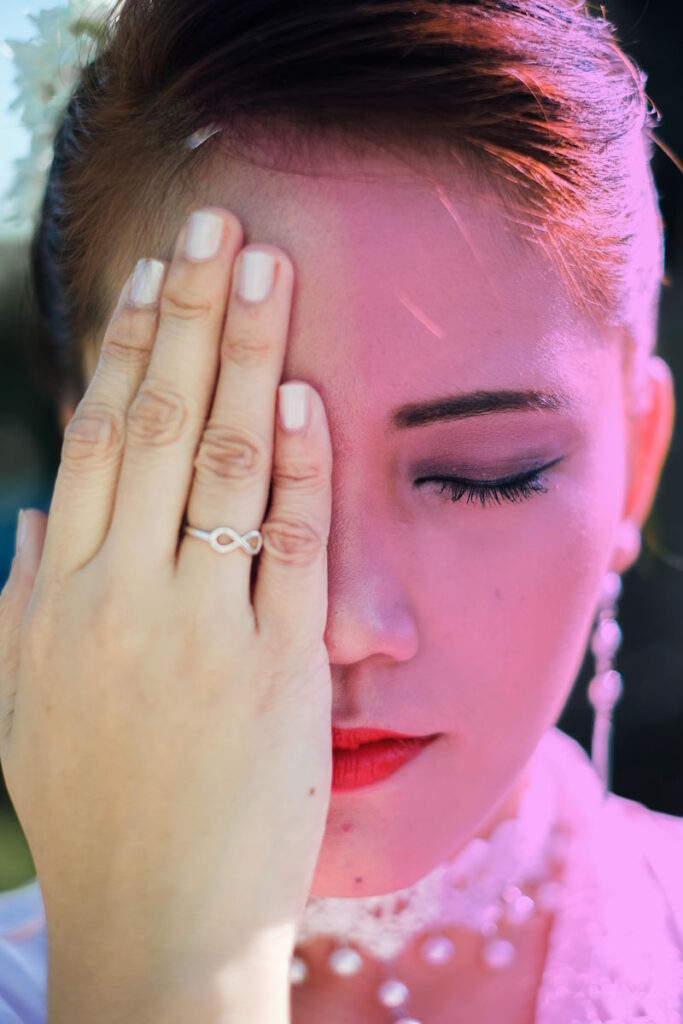
UV treatment, also known as phototherapy, is a medical treatment that uses ultraviolet (UV) light to treat certain skin conditions, including sun allergies. UV treatment can be used to help alleviate symptoms of sun allergies by desensitizing the skin to UV radiation, which can trigger allergic reactions.
During UV treatment for sun allergies, a person is exposed to controlled doses of UV light on a regular basis over a period of time. This exposure helps the body to build up a tolerance to UV radiation, reducing the likelihood of an allergic reaction.
While UV treatment can be effective in treating sun allergies, it’s important to note that it can have side effects and is not appropriate for everyone. These side effects can include skin dryness, itching, and redness, as well as an increased risk of skin cancer.
Additionally, UV treatment may not be suitable for people with certain medical conditions. As with any medical treatment, it’s important to consult with a doctor to determine if UV treatment is the right option for you.
Hardening or Toughening

Hardening or toughening of the skin is similar to UV treatments, but you treat yourself. The goal is to “harden” your skin by exposing yourself to the sun for a few minutes a day and gradually working up to longer amounts of time outdoors.
Vitamin D

Vitamin D may help as a prevention option, as individuals with sun allergies tend to be vitamin D deficient. While vitamin D is important for overall health, there is limited evidence to suggest that it can help with skin allergies.
Some studies have suggested that vitamin D may play a role in modulating the immune system, which could potentially help reduce the severity of allergic reactions. However, more research is needed to fully understand the effects of vitamin D on skin allergies.
It’s important to note that excessive sun exposure, which is a common way to increase vitamin D levels, can actually worsen skin allergies in some people. Sun exposure can trigger allergic reactions and cause further damage to already-sensitive skin.
If you are concerned about your vitamin D levels, it’s best to talk to a healthcare provider about safe ways to increase your intake, such as through diet or supplements.
Medication Substitution

Several medications can lead to photosensitivity, which can cause allergic reactions to the sun. It’s important to discuss any photosensitive side effects of your current medications with your doctor. If you experience sun allergy symptoms, your doctor may recommend alternative medications that do not cause this reaction.
Wear Long Clothing

In order to prevent sun allergy symptoms, it can be helpful to limit the amount of UV radiation that comes into contact with your skin. One effective way to do this is by wearing long clothing, such as long-sleeved shirts and pants. This can provide a physical barrier between your skin and the sun’s rays, reducing the risk of an allergic reaction.
Fortunately, there are many clothing brands that offer additional protection against UV radiation. These brands use special fabrics with built-in UV blockers, which can offer even more protection from the sun’s harmful rays.
By wearing these types of clothing, you can reduce your risk of developing sun allergies and other skin problems caused by UV radiation.
Antihistamines May Help
Antihistamines may help to relieve itching and other symptoms associated with polymorphous light eruption (PMLE) in some cases, but they are not always effective. Other treatments, such as topical corticosteroids or phototherapy, may be more effective for managing PMLE symptoms.
It is important to consult with a healthcare provider to determine the most appropriate treatment plan for your individual case of PMLE.
Home Remedies for Sun Allergies
Several home remedies can also help alleviate symptoms of sun allergy. Aloe vera can soothe the skin and reduce inflammation. Green tea contains antioxidants that can help protect the skin from damage. Oatmeal baths can also help relieve itching and soothe irritated skin.
Is it possible to outgrow a sun allergy?
Yes, it is possible to outgrow a sun allergy. However, this is not always the case, and some people may continue to experience sun allergies throughout their lives.
Can sun allergies be cured?
Sun allergies cannot be cured, but they can be managed with appropriate treatment and preventive measures.
Are there any long-term effects of sun allergies on the skin?
Long-term effects of sun allergies can include premature aging of the skin and an increased risk of skin cancer. It is important to take preventive measures and seek medical treatment if you experience sun allergy symptoms.
Can you suddenly develop a sun allergy?
Yes, it is possible to suddenly develop a sun allergy. While some people are born with a predisposition to sun allergy, it can also develop at any point in life, even if you have never experienced it before.
Next, check out
